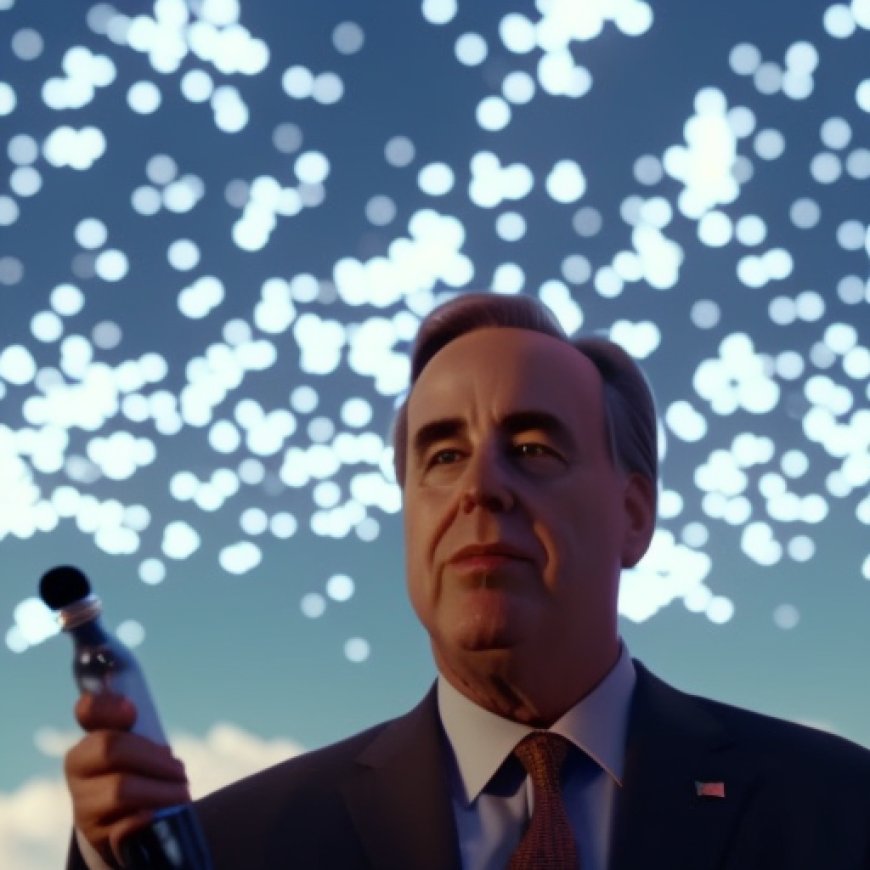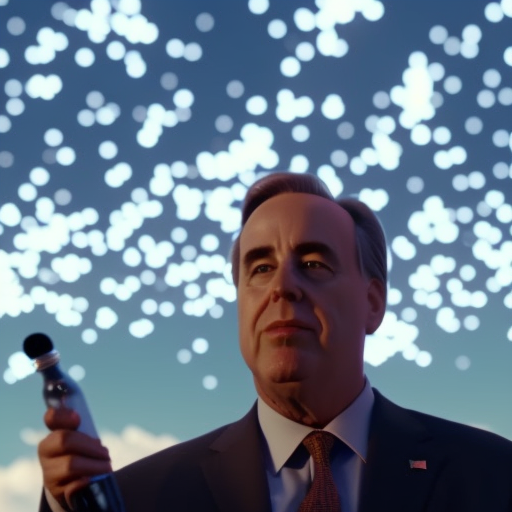Governor Healey Celebrates Climate Week by Establishing Nation’s First Long-term Biodiversity Goals, Single-Use Plastic Bottle Ban
Governor Healey Celebrates Climate Week by Establishing Nation's ... Mass.gov


Massachusetts Governor Signs Executive Orders to Address Climate Change and Sustainability
Westborough — In celebration of National Climate Week, Massachusetts Governor Maura Healey signed two key executive orders to address climate change and sustainability. The first executive order directs the state to develop biodiversity goals for 2030, 2040, and 2050. Massachusetts is the first state to set metrics out to 2050, and the first on the East Coast to include coastal and marine biodiversity. The second executive order bans the executive branch agencies from purchasing single-use plastic bottles, a key contributor to ocean pollution.
Governor Healey’s Announcement at the Clinton Global Initiative
Healey first announced the Executive Orders earlier this week at the 2023 Clinton Global Initiative’s annual meeting, which was focused on how to “keep going” in challenging times and to build a stronger future for us all. Governor Healey’s remarks were part of the session “Tides Turning: How to Accelerate Sustainable Practices for Ocean Conservation” and are available to watch here.
“Massachusetts has a long history of being first in the nation, and we’re proud to be the first to set long-term targets for biodiversity and to ban state agencies from purchasing single-use plastic bottles,” said Governor Maura Healey. “Our state is home to precious natural resources – from our towering forests, numerous lakes and ponds, vast network of rivers, and beautiful marshland, estuaries, and abundant ocean – that clean our air, power our economy, and serve as a home to hundreds threatened and rare species. These lands define the culture of our state, and today, we are taking bold action to preserve them for generations to come.”
“The importance of sustaining and restoring our state’s biodiversity cannot be overstated,” said Lieutenant Governor Kim Driscoll. “By taking action now, we can ensure that we are balancing development, climate action, and conservation in a thoughtful way. We can’t have strong communities without tackling waste and protecting our natural resources.”
Biodiversity Executive Order
Massachusetts has spent decades protecting natural resources. This executive order directs the Department of Fish and Game (DFG) to conduct a review of existing biodiversity conservation efforts and establish goals and strategies to achieve a nature-positive future for Massachusetts in 2030, 2040, and 2050. Goals will focus on sustaining a full array of Massachusetts plants, animals, and habitats to survive and flourish while providing equitable access to nature and ensuring a climate-resilient landscape for the future.
The 2019 Intergovernmental Science-Policy Platform on Biodiversity and Ecosystem Services estimated that three-quarters of the world’s land surface and 66 percent of its oceans had been significantly altered, and one million species face extinction within decades. Climate change is accelerating this decline, seriously affecting public health, the economy, food security, and emissions reductions. More than half the world’s total gross domestic product is “moderately or highly dependent” vulnerable to biodiversity loss.
Massachusetts’ oceans, rivers, forests, marshes, and conserved lands are critical natural assets for the regional economy and reducing the effects of climate change. Threats to biodiversity include habitat loss and fragmentation, infrastructure, pollution, climate change impacts, and invasive species. Currently, there are over 430 species listed under the Massachusetts Endangered Species Act. Protecting biodiversity is a long-term investment in the health, economy, and climate resilience of Massachusetts.
“Our forests and oceans are some of the most important tools for climate action that we have,” said Energy and Environmental Affairs Secretary Rebecca Tepper. “Our natural resources are a climate solution by design, and it is incumbent upon us to protect them. This framework will also ensure that environmental justice communities can access these green spaces and outdoor recreation as the weather gets more extreme.”
“Already we’ve seen impacts to species and their habitats across Massachusetts,” said DFG Commissioner Tom O’Shea. “Without setting these targets, we risk further erosion of these natural lands and waters and the species that call them home. The ripple effects on public health, the economy, and food security could be profound. The Department of Fish and Game is proud to be leading this groundbreaking initiative, and we aspire to be a national example for action on biodiversity.”
Single-Use Plastic Executive Order
The executive order bars all executive offices and agencies in Massachusetts from purchasing single-use plastic bottles under 21 fluid ounces, effective immediately and except in cases of emergency.
Most single-use plastic bottles are made from petroleum-based polyethylene terephthalate in refineries that run on fossil fuels. Plastic bottles require as much as 400 years to break down into microplastic that pollutes and leaches toxins. Americans throw away about 2.5 million plastic bottles every hour, and scientists have estimated there may be more plastic than fish by weight in the ocean by 2050.
“At every step of the production process, single-use plastic is polluting our communities and harming our wildlife,” said first-in-the-nation Climate Chief Melissa Hoffer. “Massachusetts is a proud coastal state, and we will not stand by while plastic brings harm to our ocean and the communities that rely on it. My office looks forward to implementing this bold vision for a whole-of-government approach to reducing waste and protecting our natural resources.”
Statements of Support
- Stephen Sears, Chair, Massachusetts Fisheries and Wildlife Board
- David O’Neill, CEO, Mass Audubon
- Andy Finton, Senior Conservation Ecologist, The
SDGs, Targets, and Indicators Identified in the Article
SDGs Targets Indicators SDG 14: Life Below Water Target 14.1: By 2025, prevent and significantly reduce marine pollution of all kinds, in particular from land-based activities, including marine debris and nutrient pollution – Ban on executive branch agencies purchasing single-use plastic bottles
– Plastic bottles as a key contributor to ocean pollutionSDG 15: Life on Land Target 15.5: Take urgent and significant action to reduce the degradation of natural habitats, halt the loss of biodiversity, and protect and prevent the extinction of threatened species – Development of biodiversity goals for 2030, 2040, and 2050
– Coastal and marine biodiversity included in the goals
– Over 430 species listed under the Massachusetts Endangered Species ActSDG 13: Climate Action Target 13.3: Improve education, awareness-raising, and human and institutional capacity on climate change mitigation, adaptation, impact reduction, and early warning – Biodiversity goals focused on climate-resilient landscape for the future
– Natural resources as a climate solution by design1. Which SDGs are addressed or connected to the issues highlighted in the article?
SDG 14: Life Below Water
The article addresses the issue of ocean pollution caused by single-use plastic bottles, which is connected to SDG 14: Life Below Water. The ban on executive branch agencies purchasing single-use plastic bottles aims to prevent and significantly reduce marine pollution, particularly from land-based activities.
SDG 15: Life on Land
The article highlights the importance of biodiversity conservation and the need to protect threatened species and natural habitats. This is connected to SDG 15: Life on Land, which aims to reduce the degradation of natural habitats, halt biodiversity loss, and prevent species extinction.
SDG 13: Climate Action
The article mentions the role of natural resources, such as forests and oceans, in climate action. Protecting these resources is seen as a climate solution by design. This connection to climate action is aligned with SDG 13: Climate Action, which aims to combat climate change and its impacts.
2. What specific targets under those SDGs can be identified based on the article’s content?
Target 14.1: By 2025, prevent and significantly reduce marine pollution of all kinds, in particular from land-based activities, including marine debris and nutrient pollution
The ban on executive branch agencies purchasing single-use plastic bottles directly contributes to this target by reducing marine pollution caused by plastic bottles.
Target 15.5: Take urgent and significant action to reduce the degradation of natural habitats, halt the loss of biodiversity, and protect and prevent the extinction of threatened species
The development of biodiversity goals for 2030, 2040, and 2050, including coastal and marine biodiversity, aligns with this target. It aims to protect and preserve natural habitats and prevent the extinction of threatened species.
Target 13.3: Improve education, awareness-raising, and human and institutional capacity on climate change mitigation, adaptation, impact reduction, and early warning
The focus on biodiversity goals that contribute to a climate-resilient landscape for the future and the recognition of natural resources as a climate solution align with this target. It emphasizes the importance of education, awareness, and capacity-building in climate change mitigation and adaptation.
3. Are there any indicators mentioned or implied in the article that can be used to measure progress towards the identified targets?
Yes, there are indicators mentioned or implied in the article that can be used to measure progress towards the identified targets:
- Ban on executive branch agencies purchasing single-use plastic bottles: This indicator can be used to measure progress towards Target 14.1 by tracking the reduction in marine pollution caused by plastic bottles.
- Plastic bottles as a key contributor to ocean pollution: This indicator highlights the importance of addressing plastic bottle pollution and can be used to measure progress towards Target 14.1.
- Development of biodiversity goals for 2030, 2040, and 2050: This indicator can be used to measure progress towards Target 15.5 by assessing the establishment and achievement of these goals.
- Coastal and marine biodiversity included in the goals: This indicator emphasizes the importance of protecting coastal and marine biodiversity and can be used to measure progress towards Target 15.5.
- Over 430 species listed under the Massachusetts Endangered Species Act: This indicator reflects the current status of threatened species and can be used to measure progress towards Target 15.5 by monitoring changes in the number of listed species.
- Natural resources as a climate solution by design: This indicator highlights the role of natural resources in climate action and can be used to measure progress towards Target 13.3 by assessing the integration of natural resource conservation in climate change mitigation and adaptation strategies.
4. Table: SDGs, Targets, and Indicators
SDGs Targets Indicators SDG 14: Life Below Water Target 14.1: By 2025, prevent and significantly reduce marine pollution of all kinds, in particular from land-based activities, including marine debris and nutrient pollution – Ban on executive branch agencies purchasing single-use plastic bottles
– Plastic bottles as a key contributor to ocean pollutionSDG 15: Life on Land Target 15.5: Take urgent and significant action to reduce the degradation of natural habitats, halt the loss of biodiversity, and protect and prevent the extinction of threatened species – Development of biodiversity goals for 2030, 2040, and 2050
– Coastal and marine biodiversity included in the goals
– Over 430 species listed under the Massachusetts Endangered Species ActSDG 13: Climate Action Target 13.3: Improve education Behold! This splendid article springs forth from the wellspring of knowledge, shaped by a wondrous proprietary AI technology that delved into a vast ocean of data, illuminating the path towards the Sustainable Development Goals. Remember that all rights are reserved by SDG Investors LLC, empowering us to champion progress together.
Source: mass.gov

Join us, as fellow seekers of change, on a transformative journey at https://sdgtalks.ai/welcome, where you can become a member and actively contribute to shaping a brighter future.







